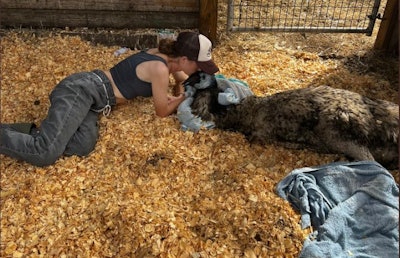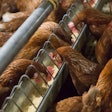
I’m sure most of us by now have heard of Emmanuel the emu – the likeable Florida ratite who was a suspected victim of highly pathogenic avian influenza (HPAI).
The good news is that Emmanuel, who had been showing signs of fatigue and potential illness, tested negative for HPAI, the emu’s owner happily proclaimed on social media. Instead, it was just under stress. Multiple national media outlets have reported on the condition of the bird, which became an internet sensation.
Emus are popular birds these days, even iconic, presumably following in the footsteps of LiMu Emu, the Liberty Mutual mascot. I’ll admit, I think emus are pretty cool myself. As I mentioned in an earlier blog, some relatives of mine used to raise emus, and they are quite majestic birds. They also can make a good meal entrée, as I had multiple emu casseroles, emu meatballs etc. at church potluck dinners during the time those relatives raised them.
As much as I like emus, I found myself wondering what in the world was really happening with Emmanuel. When reading about him, I found that some authors made it appear like he actually had avian influenza – which if he did, we could assume was of a highly pathogenic form. And so if that were the case, why had he not been euthanized? I mean, more than 46 million head of commercial birds were depopulated to prevent the spread of HPAI, so why should this bird, no matter how likeable he is, get a free pass?
I realized that I didn’t quite know all the answers. The bulk of WATT Global Media’s coverage of the North American avian influenza outbreak has focused on its impact on commercial poultry flocks, and not backyard poultry, wild birds or pets, which is really what Emmanuel appeared to be. So, I guess it makes sense that I didn’t know what all was involved when an emu is suspected of having HPAI. Still, that bothered me because I want to know all I can about this virus that’s been so disruptive to the poultry industry.
As it turns out, there were other birds on the premises that had contracted HPAI, and according to news reports, roughly 50 of those were euthanized. According to the United States Department of Agriculture (USDA) Animal and Plant Health Inspection Service (APHIS) website, eight premises in Florida have had confirmed cases of HPAI, with those flocks being subjected to the same biosecurity processes. I have a hunch which of these cases was that farm, but I’m not going to spend much time analyzing that.
I presume that Emmanuel and one other surviving bird on the farm were kept separate from the euthanized birds, and now he can continue to improve and live out a good life. And for that, I am glad.
But I do think most people familiar with Emmanuel’s story have had questions, just as I had. Perhaps this high-profile non-case of HPAI can be a catalyst for more dialogue and education about HPAI, and how to minimize its impact.



















